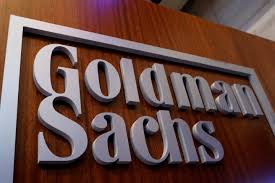Goldman Sachs is serious about becoming a bank for everyday people

Goldman Sachs’ new home improvement calculator shows it’s serious about becoming a bank for everyday people.
The investment bank launched a new calculator for would-be home renovators to estimate how a new bedroom or bathroom could affect the value of their property.
It’s part of Goldman’s strategy to become much more than just a Wall Street bank: Goldman is growing its offerings for consumers under its online Marcus brand.
The calculator is the latest indication the company intends to double down on home improvement loans, and on personal loans more generally, in the months and years to come. Home improvement loans are now the second most popular loan category on the Marcus platform, behind loans for debt consolidation, said Abhinav Anand, head of consumer lending at Marcus. The company has originated about $ 4 billion in loans through Marcus over the past two years. It declined to provide a breakout for home improvement loans specifically.
Anand noted that a person’s home is typically his or her most valuable asset.
“We like to think of it as helping customers understand this as an investment in their home, rather than just an expense,” he said.
Goldman first launched its Marcus business in 2016 with personal loans for people who wanted to consolidate their credit card debt. Since then, the bank has steadily built up its portfolio of retail banking products. It offers a high-yield online savings account, and got into home improvement loans in January. It’s about to release its online savings accounts in the United Kingdom.
The calculation: Customers want clean, easy-to-access digital products with competitive rates.
Marcus is a relatively small part of Goldman’s overall business. But the company has signaled big ambitions for the platform, especially as it looks to compensate for lower revenues from its trading arm, which has been bringing in less money since the financial crisis, in part because of market calm. The bank has indicated it could expand into life insurance, mortgages, auto loans and wealth management services down the road.
In the meantime, Marcus is looking to grow market share in the businesses it’s already in. Encouraging more borrowers to consider home improvement loans is part of the strategy.
“They’ve been taking deposits on the banking side, and a profitable way to lend those out are through personal loans to high quality homeowners,” said Greg McBride, chief financial analyst at Bankrate.
It’s a good time to be in the sector. The solid economy and job market are persuading more people to invest in home improvements, according to a July report by the Joint Center for Housing Studies at Harvard University. Gains could be even larger if home prices were to fall, since people often remodel their homes right before they sell them.
Through the home addition calculator, created in partnership with San Francisco startup HouseCanary, Goldman can get in front of potential borrowers earlier in the renovation process.
The calculator asks customers to type their address and answer a few short prompts. It then spits out a number indicating how adding a bedroom, bathroom, pool or square footage would change a home’s value, and are told they can “get started by financing this project with a no-fee, fixed rate loan from Marcus.”
Marcus makes home improvement loans up to $ 40,000. They’re unsecured, or don’t require collateral.
The interest rates, between 6.99% and 24.99%, are higher than those on an average home equity line of credit, another potential financing option. But they’re much lower than if you were to put a new waterfall shower on your credit card.
Part of the appeal is that the process is faster than applying for a home equity line of credit, which is secured by your house and requires an appraisal, Anand said.
